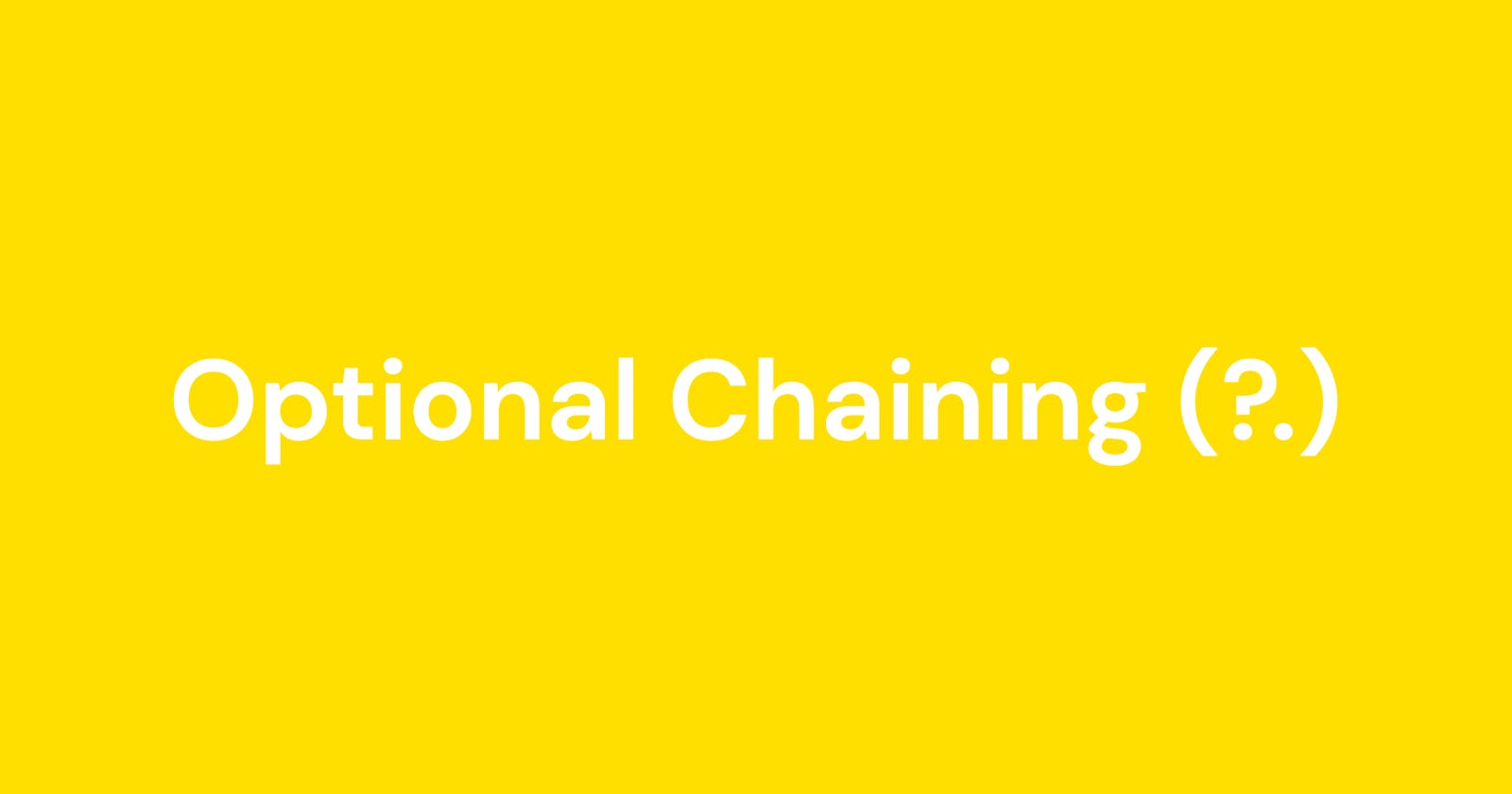In this short article, I will talk about a handy JavaScript trick that I came across recently known as Optional Chaining (?.). This is one of those tricks that will reduce the amount of code we will have to write and also clean up our code.
Hello 👋, I'm Akash from India. I work as a frontend developer at Classcard. For us to understand this better, I will explain a use case where optional chaining can be used and will show you the code with and without its usage.
Let us assume we are building a modern frontend application and we want to retrieve and display the user data from the API. We initialize a new variable called userData in the state of our application to null or {} (An empty object), assuming we don't know the response structure or if the response structure is inconsistent. We assign the data to our state variable userData once we get it from our API response. This is only an example I'm using to explain optional chaining and can be useful in other parts of our application as well.
In JavaScript, if we try to access a nested property on null or empty object, we get a reference error, but in some cases like this one, we might want to use userData.address.city in hopes of our data being updated once we receive a response from the API. This will result in a reference error as when DOM is first rendered the value of userData is either null or {}. In order to avoid this, we might do this --
userData ? userData.address ? userData.address.city : undefined : undefined
As you can tell, even though this solution works, this isn't great for readability. Multiple ternary operators are disorienting and not recommended. Now let use optional chaining and rewrite the above statement --
userData?.address?.city
That looks much better to read and feels natural. It does exactly the same thing our first code block does while also improving the readability of our code and cleans it up. You can also use this operator to access functions and other properties. If you would like to learn more about this, please refer MDN -- developer.mozilla.org/en-US/docs/Web/JavaSc..
Please let me know in the comments if you have any doubts or corrections. Subscribe to my newsletter and follow if you are interested in frontend development content like this. I write weekly, hope to see you in my next article. I'd like to end this article talking a little bit about the company I work for, Thank you.
Classcard helps organize class schedules, collect inquiries, mark attendance, grade assessments, share files, and relay personalized feedback. It also makes selling classes online easy with an instant ‘online booking page’. Class providers have had to transition to online classes or at least facilitate online booking for their (socially distant) classes. Classcard fits into the way educators already work - it integrates with video meeting platforms like Zoom. There’s also a student side app, where students are reminded of their classes. Students can also see teacher comments and track progress visually. If this sounds interesting to you, check us out at classcardapp.com
Ps. We also have a generous free plan and you can also book a demo with us at classcardapp.com/request-demo
